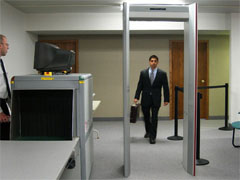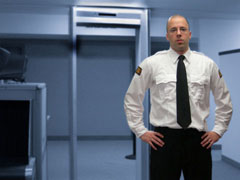 Typically located in centralized areas for easy access by many, courthouses are an essential part of critical infrastructure. Every day, thousands of people around the world gather there to attend hearings and trials and to handle other legal matters.
Typically located in centralized areas for easy access by many, courthouses are an essential part of critical infrastructure. Every day, thousands of people around the world gather there to attend hearings and trials and to handle other legal matters.
Considering the nature of activities taking place, courts can become vulnerable to acts of violence. That’s why courthouses everywhere are taking the necessary steps to protect their property, the visitors and employees, as well as the integrity of the judicial system.
Improving Courthouse Security
Security improvement efforts are not easy, but plenty of county, regional, and federal courts have already made considerable modifications to better secure their building and keep visitors safe. They have implemented new security controls and screening processes.
 Many courthouses have taken an approach similar to screening operations at airports. These airport-style checkpoints tend to have walk-through or hand-held metal detectors to inspect persons and X-ray machines to screen belongings. They may also conduct hand searches and deploy other forms of less-than-lethal technology to keep visitors and staff safe.
Many courthouses have taken an approach similar to screening operations at airports. These airport-style checkpoints tend to have walk-through or hand-held metal detectors to inspect persons and X-ray machines to screen belongings. They may also conduct hand searches and deploy other forms of less-than-lethal technology to keep visitors and staff safe.
Checkpoint security is not the only screening conducted at courthouses. A number of courts are also screen incoming mail and packages. For mailroom screening, visual inspections may be conducted along with the use of X-ray scanners and Explosive Trace Detection (ETD) systems.
Variations in Courthouse Security
Sure, there are best practices and recommendations available for securing courthouses, but no industry standards seem to exist. That’s why screening procedures differ from court to court.
When it comes to securing entrances, some courthouses restrict building access to ones with security checkpoints. Others have all entrances open to the public and it’s only when you reach certain areas of the building is screening required. Some actually employ both methods for multi-layered security.
Different security procedures also allow some courthouses to screen visitors only while others mandate screening of everyone including employees, attorneys, and judges.
The types of screening methodologies are also unique to every courthouse from metal detectors and X-ray equipment to physical search and Explosive Trace Detection. In rare instances, screening is not employed at all.
The Importance of Security Training
 In order to protect the integrity of our judicial system, there must be a feeling of security established for the people visiting and working at the courthouse. Improving security controls and screening processes is one of the best ways to do this. As part of that goal, training must be considered an essential component to support improved security measures.
In order to protect the integrity of our judicial system, there must be a feeling of security established for the people visiting and working at the courthouse. Improving security controls and screening processes is one of the best ways to do this. As part of that goal, training must be considered an essential component to support improved security measures.
Whether employing checkpoint security and/or mailroom security, training is critical in order for security personnel to be effective and successful on the job. It is a fundamental duty for courthouse screeners to protect the people’s safety and keep firearms, weapons, drugs, and prohibited items from entering a courthouse, courtroom, or chambers.
Although courthouses are gradually moving towards airport-style security screening, do you think the industry could benefit from a guideline standard? Tell us what you think in the comments section.
